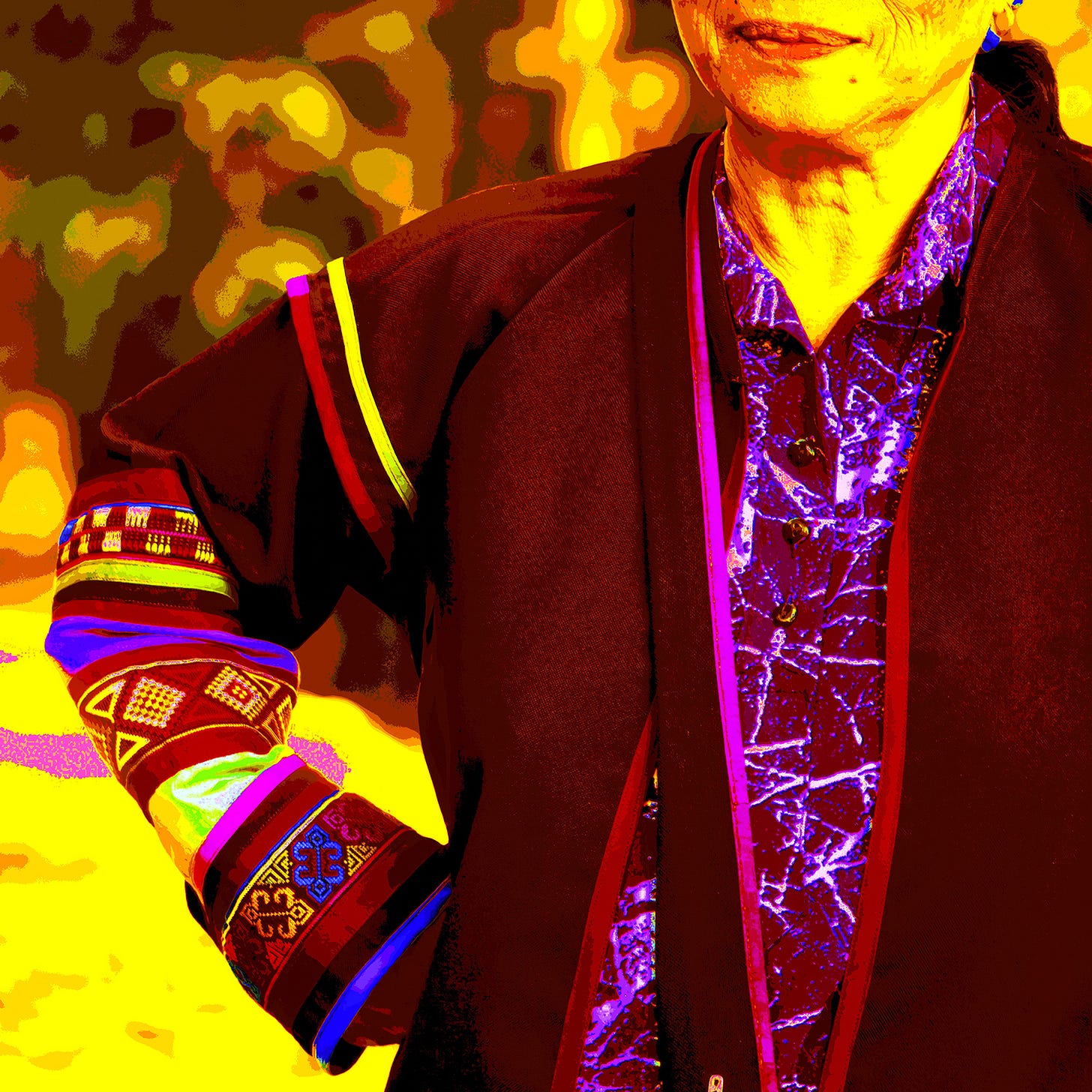XVI. Akha couture: Spirit in the weave
Part 16 of an international solo on ”Lanna“ by Lim Siang Jin. This online exhibition, comprising 20 parts, is from May 6 to June 5, 2025
THE AKHA PEOPLE journeyed from Yunnan, China, through Myanmar and Laos before settling in Northern Thailand. Their clothing tells the story of their past, blending local traditions with influences from trade and neighbouring cultures. Handwoven cotton, deep indigo and black dyes, and detailed embroidery are key elements, passed down through generations of women. Silver jewellery, often made from old coins, decorates their headdresses, showing status and offering spiritual protection. Patterns in their clothing carry meanings tied to animist beliefs, guarding against bad spirits. Despite modern changes, the Akha’s iconic designs, especially their ornate headdresses, preserve their history and identity.
Worn with pride
FOR THE AKHA, wearing traditional clothing isn’t just fashion—it’s identity and resistance. In a world shifting toward modern styles, their bold, handcrafted outfits stand as defiant symbols of heritage. We met two Akha women—an elderly lady and her middle-aged daughter—whose postures conveyed subtle rebellion. Lou, our driver, spoke to them, and they proudly pointed us to two demographics, as if to show their difference from the Buddhist culture: one with traditional religious beliefs, another with Christianity. Dressed with pride, not for tourists’ benefit, the way they carried themselves showed not only deep respect for their culture but determination to preserve it against the tide of homogenisation.

Landscapes of meanings
AKHA TEXTILES tell stories of their mountain home. Geometric designs reflect rice terraces, rivers, and forests. Zigzags mirror paddies, while diamond shapes symbolise ancestral lands. Woven on backstrap looms, these patterns aren’t just decorative—they carry deep spiritual meaning. Indigo shades mimic forest shadows, while red threads represent life. Some motifs, like “river teeth,” ward off evil, blending nature with protection rituals. Every design holds environmental wisdom, conveying respect for the land. More than fabric, these textiles act as living maps, preserving the Akha’s deep bond with nature through every stitch.

Weaving ahead
IN CHIANG RAI, Akha-inspired fashion blends old and new. Local tailors work with Akha artisans to create unique pieces—linen jackets with tribal embroidery or silk scarves with zigzag edges. In places like Mae Salong, handwoven fabrics are ethically sourced, supporting local communities. Tourists and designers value these garments for their authenticity and rich storytelling. Workshops help Akha women keep their craft alive while adapting to modern trends. This fusion of tradition and fashion turns Akha artistry into sustainable, high-end design, connecting Lanna’s mountain heritage with global style.
PHOTO: Pim and husband Archa run an Akha fashion shop called Thanita Design near Chiang Rai. It showcases traditional craftsmanship through Thailand’s One Tambon, One Product (OTOP) initiative. (“Tambon” means township.) Pim, an award-winning tailor, was honoured as an “Outstanding Woman” by the Chiang Rai Municipality, a recognition proudly displayed in their shop. She received this prestigious certificate on International Women’s Day 2023, presented by Chiang Rai Mayor Wanchai Chongsuttanamanee.
For more information, click on links: Stephen Menon, O Art Space Gallery, Lim Siang Jin and his art, here and here. For a detailed acknowledgment, click here




